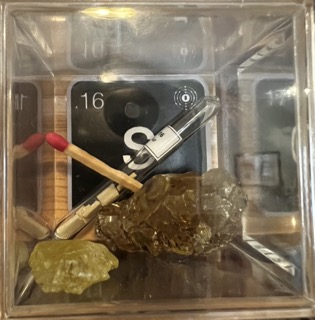Description
Chalcogens, located in Group 16 of the periodic table, comprise oxygen, sulfur, selenium, tellurium, and the radioactive element polonium. These elements are known for their diverse range of physical and chemical properties and are essential in various biological, geological, and industrial processes. Oxygen, the most abundant and perhaps the most vital, is crucial for respiration in most living organisms and is a key component of water. Sulfur, another well-known chalcogen, plays a vital role in both the biosphere and geosphere; biologically, it is a component of amino acids and vitamins, and geologically, it is found in sulfide and sulfate minerals.
Chalcogens generally have six electrons in their outer shell, making them tend to form -2 anions. Their reactivity and the types of compounds they form vary across the group. Oxygen, for example, is highly reactive, readily forming oxides with most elements. Sulfur is known for its ability to form a wide range of allotropes and compounds, including sulfuric acid, a critical industrial chemical.
Selenium and tellurium, the less abundant chalcogens, have applications in electronics and photocopics due to their semiconductor properties. Selenium is also essential in trace amounts for human health, while tellurium is used in alloys and solar panels. Polonium, the rarest and most radioactive chalcogen, has limited applications, mainly in devices that exploit its radioactivity, such as antistatic brushes.
Chalcogens are typically found in various ore minerals and rarely in their pure elemental form due to their reactivity. Their varied chemical behaviors and the essential roles they play in life, earth, and technological processes make them a significant group in the periodic table.



 using WordPress and
using WordPress and